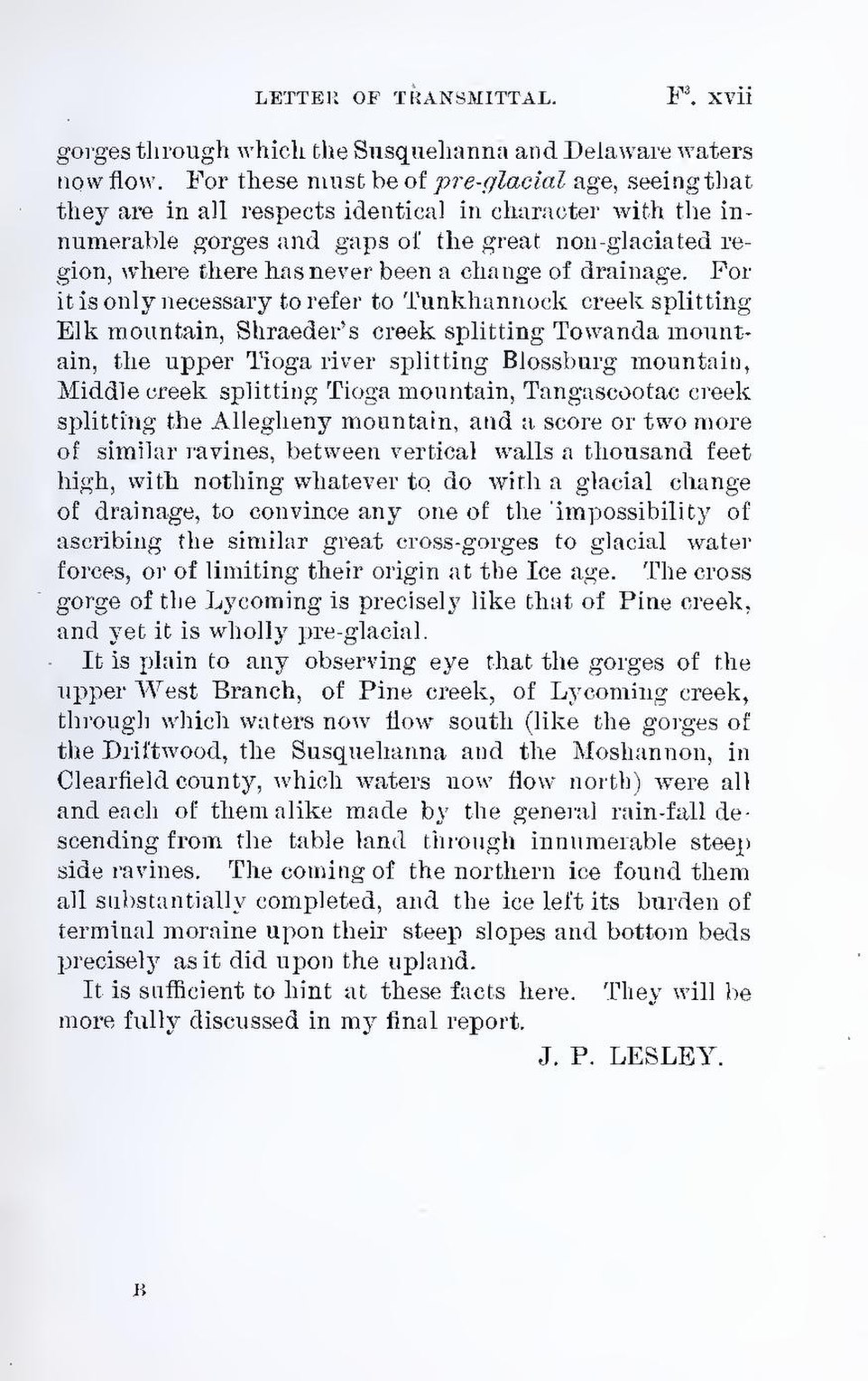gorges through which the Susquehanna and Delaware waters now flow. For these must be of pre-glacial age, seeing that they are in all respects identical in character with the in- numerable gorges and gaps of the great non-glaciated re- gion, where there has never been a change of drainage. For it is only necessary to refer to Tunkhannock creek splitting Elk mountain, Shraeder’s creek splitting Towanda mount- ain, the upper Tioga river splitting Blossburg mountain, Middle creek splitting Tioga mountain, Tangascootac creek splitting the Allegheny mountain, and a score or two more of similar ravines, between vertical walls a thousand feet high, with nothing whatever to do with a glacial change of drainage, to convince any one of the impossibility of ascribing the similar great cross-gorges to glacial water forces, or of limiting their origin at the Ice age. The cross gorge of the Lycoming is precisely like that of Pine creek, and yet it is wholly pre-glacial.
It is plain to any observing eye that the gorges of the upper West Branch, of Pine creek, of Lycoming creek, through which waters now flow south (like the gorges of the Driftwood, the Susquehanna and the Moshannon, in Clearfield county, which waters now flow north) were all and each of them alike made by the general rain-fall descending from the table land through innumerable steep side ravines. The coming of the northern ice found them all substantially completed, and the ice left its burden of terminal moraine upon their steep slopes and bottom beds precisely as it did upon the upland.
It is sufficient to hint at these facts here. They will be more fully discussed in my final report.
